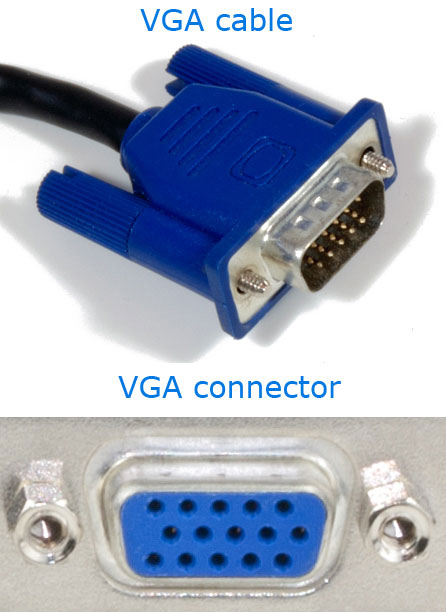Video Graphics Adapter ( VGA ) Port
Video Graphics Adapter ( VGA ) Port
Short for Video Graphics Adapter or Video Graphics Array, VGA is a popular display standard developed by IBM and introduced in 1987. VGA provides 640 x 480 resolution color display screens with a refresh rate of 60 Hz and 16 colors displayed at a time. If the resolution is lowered to 320 x 200, 256 colors are shown.
VGA utilizes analog signals, which means it is only capable of lower resolutions and lower quality display on screens.
VGA cable and connector
The VGA/SVGA cable and connector will typically look like on the monitor, and on the back of the computer. The VGA standard has been replaced by SVGA and, although these cables and connectors are still referred to as VGA, they are technically SVGA.

VGA cable and connector
VGA pin functions

VGA Pin Function
The illustration shows the 15-pin VGA connector, its pin assignments, and size dimensions. As can be seen, the VGA connector has 15 holes and each hole (pin) has its own function as explained in the below chart.
| Pin | Function |
|---|---|
| 1 | Red Video |
| 2 | Green Video |
| 3 | Blue Video |
| 4 | Monitor ID 2 |
| 5 | TTL Ground (monitor self-test) |
| 6 | Red Analog Ground |
| 7 | Green Analog Ground |
| 8 | Blue Analog Ground |
| 9 | Key (Plugged Hole) |
| 10 | Sync Ground |
| 11 | Monitor ID 0 |
| 12 | Monitor ID 1 |
| 13 | Horizontal Sync |
| 14 | Vertical Sync |
| 15 | Monitor ID 3 |
